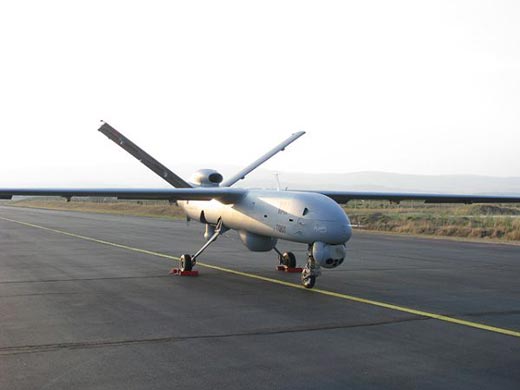Turkey’s first indigenous Medium-Altitude, Long-Endurance (MALE) Unmanned Aerial Vehicle designated ‘Anka’ made its first test flight December 31, 2010. Anka is Turkey’s first entry into the MALE system category. Sofar the the Turkish industry has produces only the smaller Unmanned Aerial Systems. The drone went through extensive flight testing program and on January 5, 2012, the Undersecretariat for the Defense Industry (SSM) and Defense Industry Executive Committee decided to award TUSAŞ Aerospace Industries a production order for 10 aircraft to equip the Turkish Air Forces UAV unit.

The new UAV is designed to fly at an altitude of 30,000 feet for 24 hours.Anka has a wingspan of 17.3 meters and is powered by a diesel engine rated at 155-hp, It’s eight meter long fuselage is mad of composite.
Anka uses the locally developed ASELFLIR 300T payload developed by Aselsan. This payload includes a multi-sensor electro-optical system comprising a day TV, and Thermal Camera (IR-Infrared) / Laser Range Finder / Laser Designator (LRF/LD) and Laser Spotter. The Anka also carries a Synthetic Aperture Radar / Moving Target Indicator (SAR/MTI) which also supports with Inverse SAR ISAR operating mode for maritime missions.
Turkey is aiming at gaining self sufficiency in unmanned systems in upcoming year. The Turkish military was introduced to UAS through the use of UAVs leased from Israel, and the procurement of Israeli IAI Heron UAVs – a delivery recently completed, despite the deteriorating relations between the two countries. Turkey’s military has used these UAVs in its war against Kurdish separatists operating in the country’s southeast bordering Iraq and Iran.
Along with its quest for self sufficiency, Turkey embarked on the development of the new system in 2005. A prototype designated Turkish Indigenous MALE UAV (TIHA) unveiled in May 2010

















